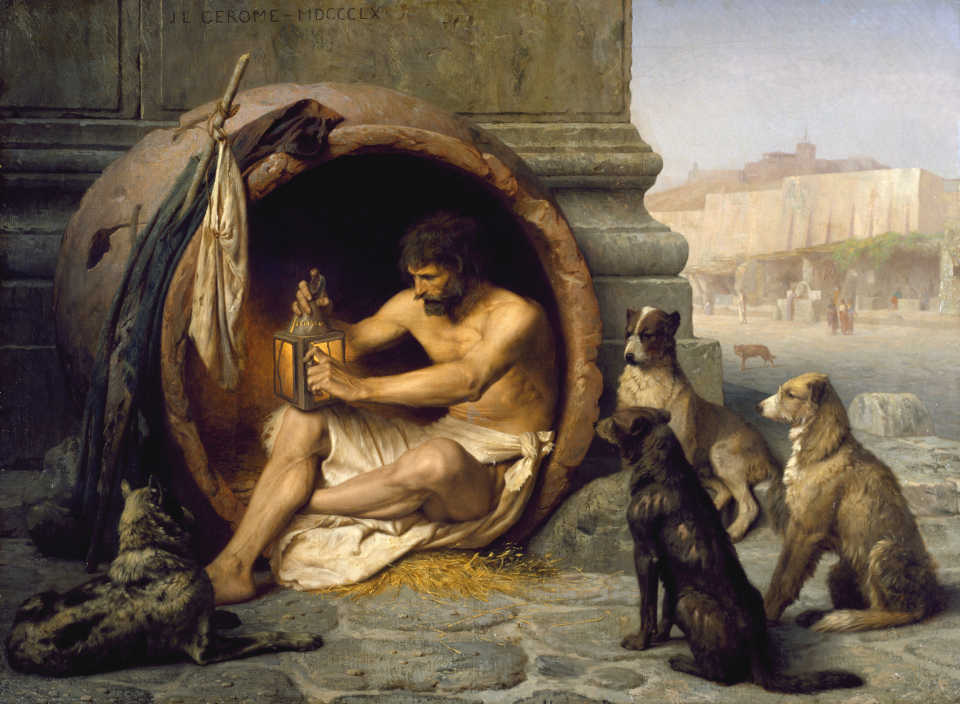Applying the Lessons of Art
Oct. 23rd, 2023 10:13 amOne of the things I think we moderns get really wrong is "what is art." If I asked any of my friends what is great art, they will say that it is something that does a good job of making them feel a certain way. I would disagree very strongly: that's not art; it's kitsch, or propaganda, or something—art doesn't make you feel, it asks what you feel. Great art must be collaboration between the artist and the viewer.
Let's look at an example. One of my favorite paintings is "Diogenes Sitting in His Tub," by Jean-Léon Gérôme (1860):

(What can I say? I really like Diogenes!)
The reason I think this is great art is that you can keep looking at it and discovering more and more about it (and yourself). The painting doesn't have answers, it has questions, and you must find the answers within. For example, the painting has dogs sitting in a circle around Diogenes, as if learning from him. Why? Perhaps it's merely a nod to "Cynic" meaning "doglike," but that's too easy: look deeper.
Since Diogenes is preparing the lamp which he famously used to "search for a true man," perhaps the painter is implying that dogs are more true than men are.
Perhaps the dog on the left—lying down as if observing but not attentively—is Diogenes' teacher, Antisthenes; then there is Diogenes is in the middle; and the three of rapt attention on the right are the most famous of Diogenes' students: perhaps Crates, Hipparchia, and Monimus. So the dogs could represent the line of succession in the Cynic school. (Maybe the itsy-bitsy dog in the background wandering away is Zeno the Stoic!)
Perhaps what's important is the gap—it is as if there are dogs simply sitting in an even circle around Diogenes, learning from him, but there's a missing dog where the viewer is, implying that the viewer of the painting is the missing dog. This would be an implied exhortation to also learn from Diogenes' example.
Either way, what's important is not the painting itself, but what the painting provokes: it isn't about what the artist intended, it's about what you can learn from it. In many ways, studying great art is much like the process of contemplation: apply the same tools from the graphical to the allegorical, and one can study myths in the same way.